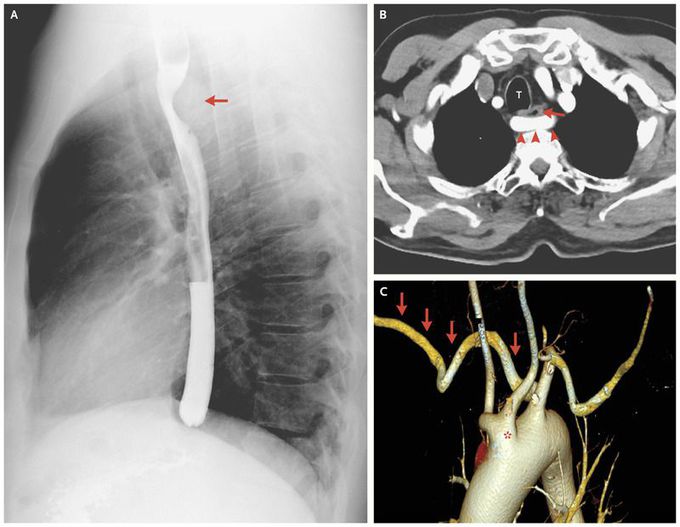


Dysphagia Lusoria
A 46-year-old otherwise healthy man presented with a 1-year history of occasional dysphagia to solid foods that was not accompanied by weight loss. The results of a physical examination were unremarkable. A barium-swallow examination revealed posterior oblique indentation of the proximal esophagus (arrow in Panel A and Panel B; T indicates the trachea in Panel B). A computed tomographic scan of the chest with contrast enhancement showed an aberrant right subclavian artery (Panel B, arrowheads; also indicated by arrows in Panel C, a three-dimensional reconstruction) originating as the third branch of the aortic arch, distal to the truncus bicaroticus (a vascular anomaly in which the carotid arteries have a common origin) (Panel C, asterisk) and to the left subclavian artery. The aberrant right subclavian artery followed a retroesophageal course, resulting in a prominent compression of the esophagus, a finding consistent with dysphagia lusoria. The patient was referred to a vascular surgeon; because the dysphagia was only mild to moderate, the patient declined surgery and was therefore treated conservatively with lifestyle modification. Most patients with an aberrant subclavian artery are asymptomatic. Children may present with recurrent pulmonary infections or stridor, in contrast to adults, who more often present with dysphagia. The onset of symptoms in adulthood, as in this case, is relatively rare.

